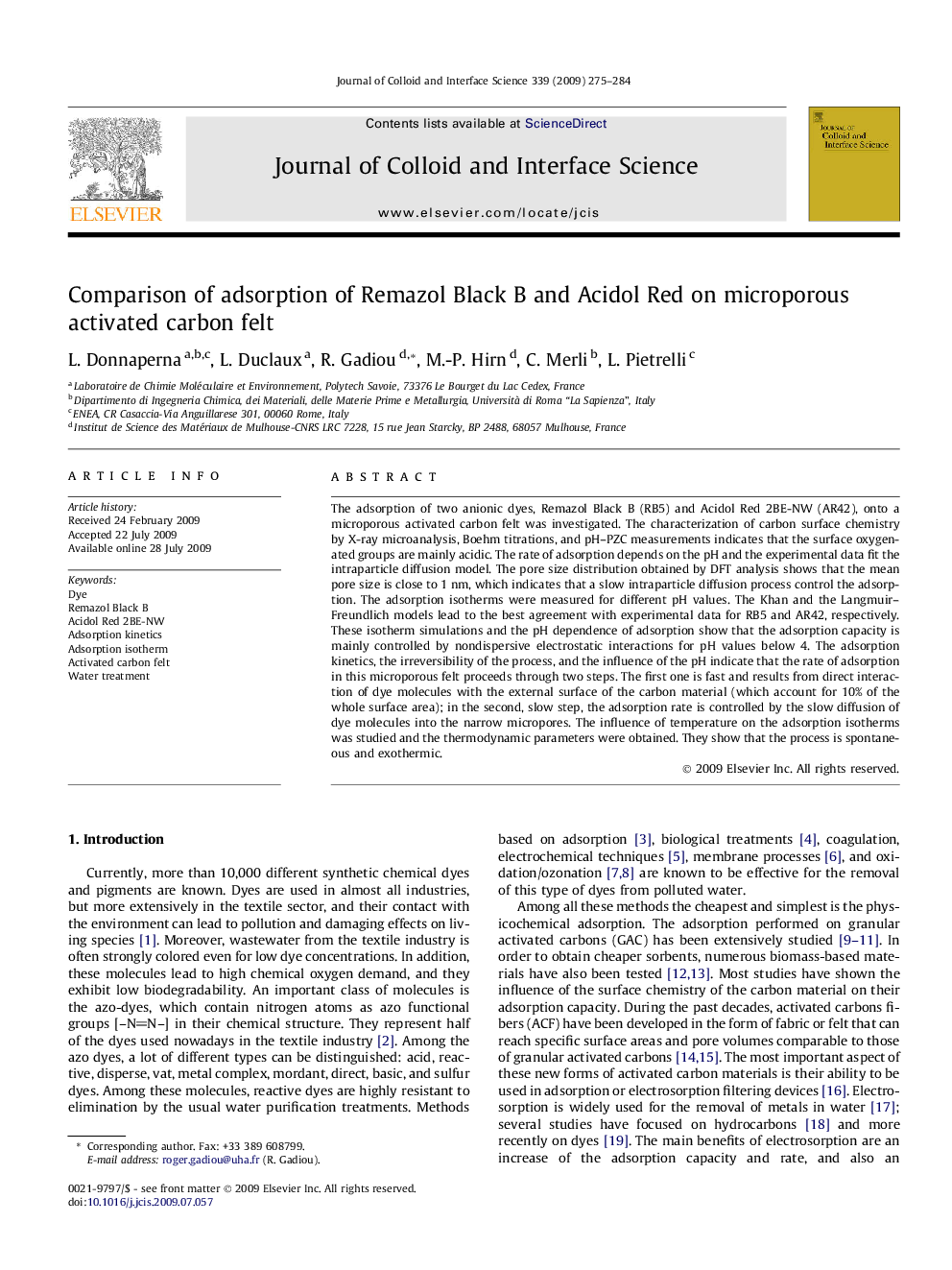| Article ID | Journal | Published Year | Pages | File Type |
|---|---|---|---|---|
| 610266 | Journal of Colloid and Interface Science | 2009 | 10 Pages |
The adsorption of two anionic dyes, Remazol Black B (RB5) and Acidol Red 2BE-NW (AR42), onto a microporous activated carbon felt was investigated. The characterization of carbon surface chemistry by X-ray microanalysis, Boehm titrations, and pH–PZC measurements indicates that the surface oxygenated groups are mainly acidic. The rate of adsorption depends on the pH and the experimental data fit the intraparticle diffusion model. The pore size distribution obtained by DFT analysis shows that the mean pore size is close to 1 nm, which indicates that a slow intraparticle diffusion process control the adsorption. The adsorption isotherms were measured for different pH values. The Khan and the Langmuir–Freundlich models lead to the best agreement with experimental data for RB5 and AR42, respectively. These isotherm simulations and the pH dependence of adsorption show that the adsorption capacity is mainly controlled by nondispersive electrostatic interactions for pH values below 4. The adsorption kinetics, the irreversibility of the process, and the influence of the pH indicate that the rate of adsorption in this microporous felt proceeds through two steps. The first one is fast and results from direct interaction of dye molecules with the external surface of the carbon material (which account for 10% of the whole surface area); in the second, slow step, the adsorption rate is controlled by the slow diffusion of dye molecules into the narrow micropores. The influence of temperature on the adsorption isotherms was studied and the thermodynamic parameters were obtained. They show that the process is spontaneous and exothermic.
Graphical abstractThe adsorption of two anionic dyes onto a microporous activated carbon felt was investigated. The adsorption is controlled in a first fast step by interaction with the external surface and then by slow diffusion into the narrow micropores.Figure optionsDownload full-size imageDownload as PowerPoint slide
